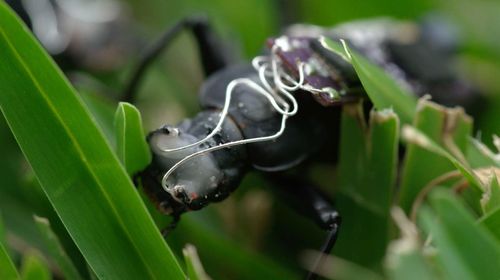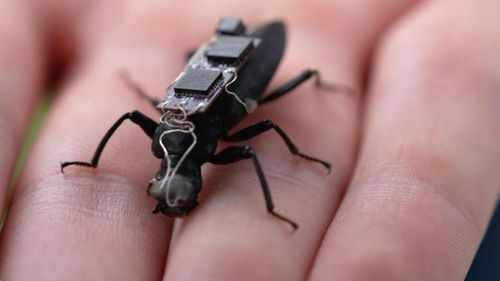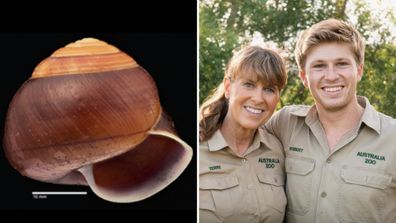The patient is submerged in an ice bath as an anaesthetic for its impending surgery.

“Only when it leaves the desired path that we want it to be on do we intervene and tell it to actually go this way instead of the way it was actually heading,” says Fitzgerald, who is studying mathematics and engineering.
He hopes to create an army of insect-machine search and rescue workers.
“We see a future where after an urban disaster like an earthquake or a bombing, where humans can’t safely access the disaster site, being able to send in a bunch of cyborg beetles to navigate the disaster zone quickly and efficiently,” he says.
Having to handle the bugs doesn’t bother Fitzgerald: “No, they definitely don’t gross me out!”
Cyborg insects have an edge over traditional robots, according to Fitzgerald.

“Insects are so adaptable compared to an artificial robotic system, which has to perform so much computation to be able to deal with all these different scenarios that might get thrown at it in the real world,” he explains.
Fitzgerald says cyborg search and rescue beetles or cockroaches might be able to help in disaster situations by finding and reporting the location of survivors and delivering lifesaving drugs to them before human rescuers can get there.
But first, the Australian researchers must master the ability to direct the movements of the insects, which could take a while. Fitzgerald says that although the work might seem futuristic now, in a few decades, cyborg insects could be saving lives.

New snail species named after Robert Irwin
Caltech academics told CNN that they worked with bioethicists to ensure its interventions don’t cause any type of stress response in the jellyfish they work with.
Fitzgerald says that beetles that have had backpacks attached to them have normal life expectancies.
“So I don’t think they mind, per se,” he says.
“The science is out on whether or not they’re actually conscious beings,” he adds.
He agrees that concerns about the welfare of the creatures are valid but urges people to consider the benefits.
“I think the potential for this technology to save lives in an urban disaster, it really outweighs any kind of hesitancy you might have towards the field,” he said.



